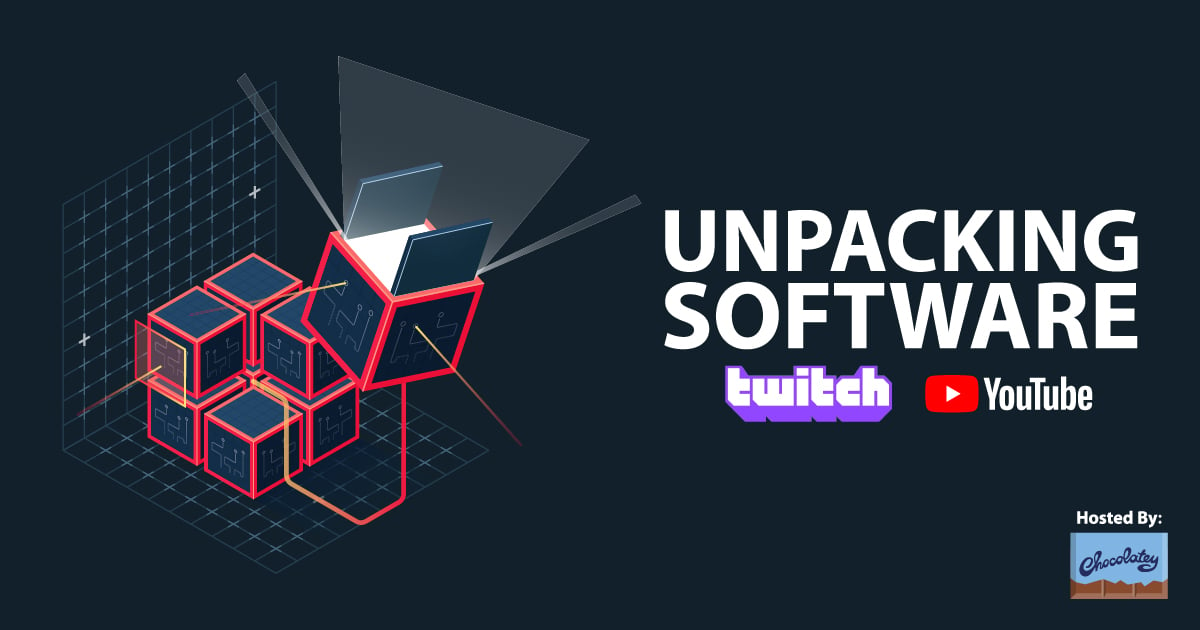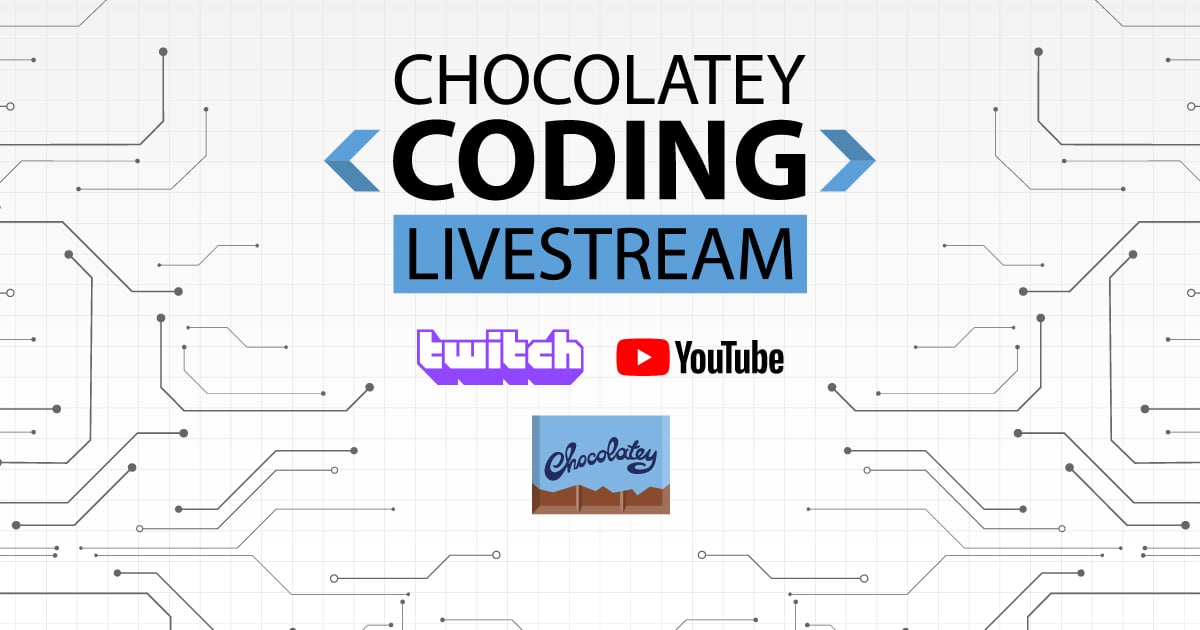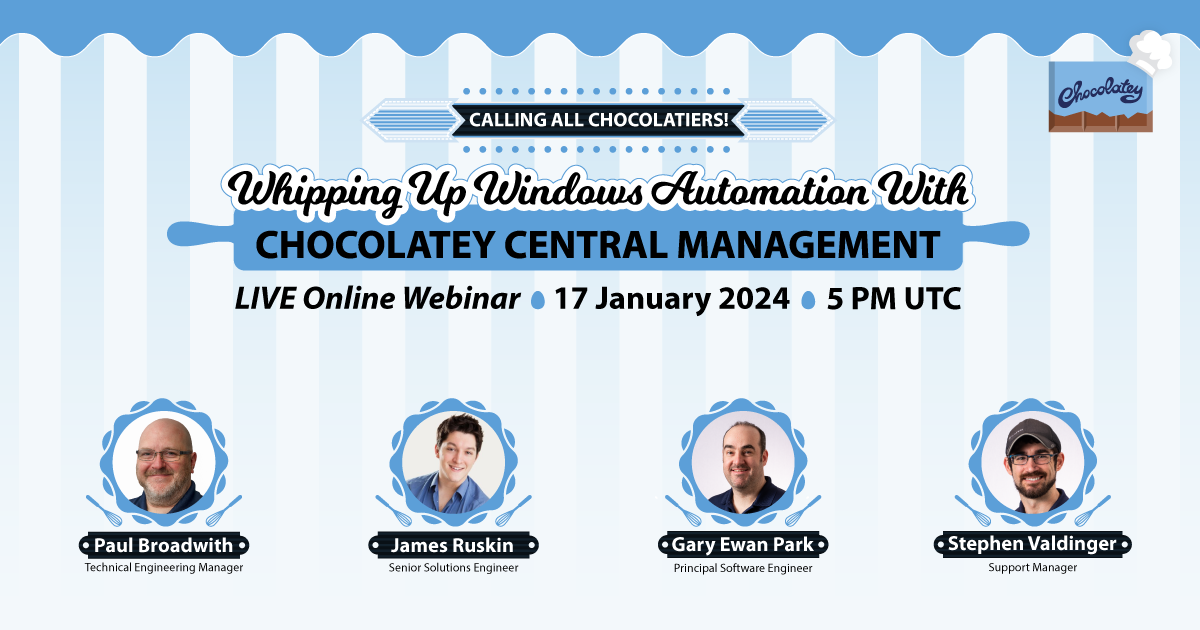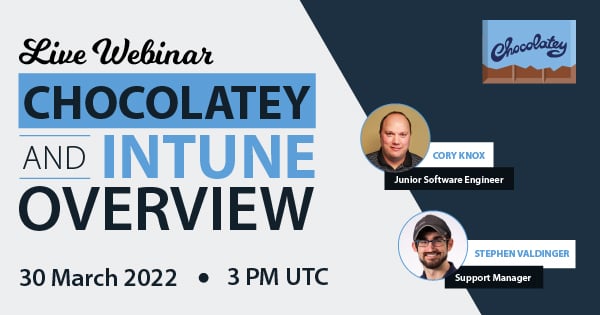
Downloads:
1,554
Downloads of v 1.12.0:
40
Last Update:
30 May 2025
Package Maintainer(s):
Software Author(s):
- Voxengo
Tags:
- Software Specific:
- Software Site
- Software License
- Software Docs
- Package Specific:
- Package Source
- Package outdated?
- Package broken?
- Contact Maintainers
- Contact Site Admins
- Software Vendor?
- Report Abuse
- Download
Voxengo Drumformer
- 1
- 2
- 3
1.12.0 | Updated: 30 May 2025
- Software Specific:
- Software Site
- Software License
- Software Docs
- Package Specific:
- Package Source
- Package outdated?
- Package broken?
- Contact Maintainers
- Contact Site Admins
- Software Vendor?
- Report Abuse
- Download
Downloads:
1,554
Downloads of v 1.12.0:
40
Maintainer(s):
Software Author(s):
- Voxengo
Voxengo Drumformer 1.12.0
Legal Disclaimer: Neither this package nor Chocolatey Software, Inc. are affiliated with or endorsed by Voxengo. The inclusion of Voxengo trademark(s), if any, upon this webpage is solely to identify Voxengo goods or services and not for commercial purposes.
- 1
- 2
- 3
This Package Contains an Exempted Check
Not All Tests Have Passed
Deployment Method: Individual Install, Upgrade, & Uninstall
To install Voxengo Drumformer, run the following command from the command line or from PowerShell:
To upgrade Voxengo Drumformer, run the following command from the command line or from PowerShell:
To uninstall Voxengo Drumformer, run the following command from the command line or from PowerShell:
Deployment Method:
This applies to both open source and commercial editions of Chocolatey.
1. Enter Your Internal Repository Url
(this should look similar to https://community.chocolatey.org/api/v2/)
2. Setup Your Environment
1. Ensure you are set for organizational deployment
Please see the organizational deployment guide
2. Get the package into your environment
Option 1: Cached Package (Unreliable, Requires Internet - Same As Community)-
Open Source or Commercial:
- Proxy Repository - Create a proxy nuget repository on Nexus, Artifactory Pro, or a proxy Chocolatey repository on ProGet. Point your upstream to https://community.chocolatey.org/api/v2/. Packages cache on first access automatically. Make sure your choco clients are using your proxy repository as a source and NOT the default community repository. See source command for more information.
- You can also just download the package and push it to a repository Download
-
Open Source
-
Download the package:
Download - Follow manual internalization instructions
-
-
Package Internalizer (C4B)
-
Run: (additional options)
choco download voxengo-drumformer --internalize --source=https://community.chocolatey.org/api/v2/ -
For package and dependencies run:
choco push --source="'INTERNAL REPO URL'" - Automate package internalization
-
Run: (additional options)
3. Copy Your Script
choco upgrade voxengo-drumformer -y --source="'INTERNAL REPO URL'" [other options]See options you can pass to upgrade.
See best practices for scripting.
Add this to a PowerShell script or use a Batch script with tools and in places where you are calling directly to Chocolatey. If you are integrating, keep in mind enhanced exit codes.
If you do use a PowerShell script, use the following to ensure bad exit codes are shown as failures:
choco upgrade voxengo-drumformer -y --source="'INTERNAL REPO URL'"
$exitCode = $LASTEXITCODE
Write-Verbose "Exit code was $exitCode"
$validExitCodes = @(0, 1605, 1614, 1641, 3010)
if ($validExitCodes -contains $exitCode) {
Exit 0
}
Exit $exitCode
- name: Install voxengo-drumformer
win_chocolatey:
name: voxengo-drumformer
version: '1.12.0'
source: INTERNAL REPO URL
state: present
See docs at https://docs.ansible.com/ansible/latest/modules/win_chocolatey_module.html.
chocolatey_package 'voxengo-drumformer' do
action :install
source 'INTERNAL REPO URL'
version '1.12.0'
end
See docs at https://docs.chef.io/resource_chocolatey_package.html.
cChocoPackageInstaller voxengo-drumformer
{
Name = "voxengo-drumformer"
Version = "1.12.0"
Source = "INTERNAL REPO URL"
}
Requires cChoco DSC Resource. See docs at https://github.com/chocolatey/cChoco.
package { 'voxengo-drumformer':
ensure => '1.12.0',
provider => 'chocolatey',
source => 'INTERNAL REPO URL',
}
Requires Puppet Chocolatey Provider module. See docs at https://forge.puppet.com/puppetlabs/chocolatey.
4. If applicable - Chocolatey configuration/installation
See infrastructure management matrix for Chocolatey configuration elements and examples.
This package is exempt from moderation. While it is likely safe for you, there is more risk involved.
Drumformer is a multiband drum and master track dynamics processing AU and VST plugin for professional music and audio production applications. Drumformer was designed to be a comprehensive solution for the broadest range of sound processing tasks, allowing you to easily implement almost any dynamics processing idea you may have.
Package Specific
Package Parameters
The following package parameters can be set:
/NoVst2x86- Do not install the x86 VST2 version/NoVst2x64- Do not install the x64 VST2 version/NoVst3x86- Do not install the x86 VST3 version/NoVst3x64- Do not install the x64 VST3 version/NoAaxx86- Do not install the x86 AAX version/NoAaxx64- Do not install the x64 AAX version/NoShortcuts- Do not install shortcuts to manuals and uninstaller into start menu or onto desktop/Vst2Path:- Installation path of the VST2 version/Vst2x86Path:- Installation path of the x86 VST2 version on x64 CPU architecture/InstallerPath:- Do not download the installer from the official Voxengo website and use the one passed with this argument instead. Use it, if you don't have an internet connection at your studio computer./CompanyPath:- Path of the company to put all program files in. Override if you want to have the program files at a custom location.
You must pass the package parameters like this:
$VST2x86 = [System.Environment]::GetEnvironmentVariable('CommonProgramFiles(x86)') + "\VST2\Voxengo"
choco install voxengo-drumformer --package-parameters "'/NoVst2x64 /Vst2x86Path:$VST2x86 '"
# Installer Functions
<#
.SYNOPSIS
Checks for default installer values
#>
function GetDefaultValues () {
$newDefaultPath = GetDefaultVst2Directory(64)
If (![string]::IsNullOrWhiteSpace($newDefaultPath)) {
Write-Debug("Default VST2 64 Path found: " + $newDefaultPath)
$global:vst2DefaultPath = $newDefaultPath
}
$newDefaultPath = GetDefaultVst2Directory(32)
If (![string]::IsNullOrWhiteSpace($newDefaultPath)) {
Write-Debug("Default VST2 32 Path found: " + $newDefaultPath)
$global:vst2x86_64DefaultPath = $newDefaultPath
}
}
<#
.SYNOPSIS
If default values were found (for instance in the registry) and no overrides have been given, set default installer settings
.DESCRIPTION
If default values were found (for instance in the registry) and no overrides have been given, set default installer settings
#>
function PickDefaultValuesFromSystem () {
If ([string]::IsNullOrWhiteSpace($pp["Vst2Path"])) {
If (![string]::IsNullOrWhiteSpace($global:vst2DefaultPath)) {
Write-Debug("Overwriting VST2 path with value found in registry: " + $vst2DefaultPath)
$global:vst2Path = $global:vst2DefaultPath
}
}
If ([string]::IsNullOrWhiteSpace($pp["Vst2x86Path"])) {
If (![string]::IsNullOrWhiteSpace($global:vst2x86_64DefaultPath)) {
Write-Debug("Overwriting VST2x86 path with value found in registry: " + $global:vst2x86_64DefaultPath)
$global:vst2x86_64Path = $global:vst2x86_64DefaultPath
}
}
If ($pp["CompanyPath"] -eq $false) {
# Some installers have an automatic detection mechanism for this path next to a default
Write-Debug "Checking if automatic install path detection is implemented ..."
if (Get-Command InstallerCompanyPathAutomaticDetection -errorAction SilentlyContinue) {
Write-Debug "InstallerCompanyPathAutomaticDetection defined, so dot sourcing $PSScriptRoot\helpers-pathresolve.ps1"
. $PSScriptRoot\helpers-pathresolve.ps1
InstallerCompanyPathAutomaticDetection
If ($autoInstDetectionCompanyPath) {
Write-Debug("AutoInstDetectionCompanyPath: " + $autoInstDetectionCompanyPath)
$global:companyPath = $autoInstDetectionCompanyPath
}
}
}
}
<#
.SYNOPSIS
Try to find the default VST2 directory
.DESCRIPTION
Try to find the default VST2 directory
.PARAMETER bitToCheck
Wether to find the default 32 bit or 64 bit directory
.NOTES
Comment added because reviewer asked to do so.
#>
function GetDefaultVst2Directory ($bitToCheck) {
If ($bitToCheck -eq 32) {
$defaultRegBasePath = "HKLM:\\SOFTWARE\WOW6432Node\VST"
$installerDefaultRegPath = $vst2x86_64PathReg
} ElseIf ($bitToCheck -eq 64) {
$defaultRegBasePath = "HKLM:\\SOFTWARE\VST"
$installerDefaultRegPath = $vst2PathReg
}
$returnVst2Path = $null
If (Test-Path -Path $defaultRegBasePath) {
$newVst2Path = Get-ItemProperty -Path $defaultRegBasePath -ErrorAction SilentlyContinue | Select-Object -ExpandProperty VstPluginsPath -ErrorAction SilentlyContinue
If (![string]::IsNullOrWhiteSpace($newVst2Path)) {
If ($vst2AddSubfolder) {
$newVst2Path += "\$companyPath"
}
$returnVst2Path = $newVst2Path
}
}
If (![string]::IsNullOrWhiteSpace($installerDefaultRegPath.key)) {
$newVst2Path = Get-ItemProperty -Path $installerDefaultRegPath.key -ErrorAction SilentlyContinue | Select-Object -ExpandProperty $installerDefaultRegPath.name -ErrorAction SilentlyContinue
If (![string]::IsNullOrWhiteSpace($newVst2Path)) {
$returnVst2Path = $newVst2Path
}
}
return $returnVst2Path
}
# Creates/Overwrites bit-aware variables, so x86 files can use the same path-var on both platforms
function CreateBitAwareVariables () {
if($osBitness -eq 64) {
$global:vst2x86BitAware = "$vst2x86_64Path"
$global:vst3x86BitAware = "$vst3x86_64Path"
$global:aaxx86BitAware = "$aaxx86_64Path"
$global:vst2x86PathRegBitAware = "$vst2x86_64PathReg"
$global:rtasBitaware = "${env:COMMONPROGRAMFILES(x86)}\Digidesign\DAE\Plug-Ins"
}
if($osBitness -eq 32) {
$global:vst2x86BitAware = "$vst2Path"
$global:vst3x86BitAware = "$vst3Path"
$global:aaxx86BitAware = "$aaxPath"
$global:vst2x86PathRegBitAware = "$vst2PathReg"
$global:rtasBitaware = "${env:COMMONPROGRAMFILES}\Digidesign\DAE\Plug-Ins"
}
}
<#
.SYNOPSIS
Which installation steps are actually necessary for the given OS and package parameters?
.DESCRIPTION
Checks the current OS bitness and the given package parameters and marks all steps from the chocolateyvariables file to be actually executed by setting their 'execute' bit.
.PARAMETER objectsList
A list of objects with a 'validpp' key and a 'bit' key from the chocolateyvariables.ps1 file.
.NOTES
#>
function DetermineExecutionOfAllObjects ($objectsList) {
Foreach ($object in $objectsList) {
$object.Add('execute', $false)
$bitStatus = ($object.bit -eq $null) -Or ($object.bit -Contains $osBitness)
$ppIndependent = (($object.validpp -eq $null) -Or ($object.validpp -Like "Always"))
Write-Debug ("ppindependent: " + $ppIndependent)
Write-Debug ("bitStatus: " + $bitStatus)
Foreach ($packageParameter in $object.validpp) {
Write-Debug ("Status of evaluated package parameter:" + $packageParameter)
if ((Test-Path variable:pp.packageParameter) -eq $true) {
Write-Debug $pp[$packageParameter]
Write-Debug ($pp[$packageParameter] -eq $false)
}
if (($pp[$packageParameter] -eq $false) -And $bitStatus) {
$object.execute = $true
}
}
if ($ppIndependent -And $bitStatus) {
$object.execute = $true
}
If ($object.ContainsKey("dropIfNull")) {
Write-Debug ("Object $object contains a dropIfNull!")
Foreach ($variableToCheck in $object.dropIfNull) {
If ([string]::IsNullOrWhiteSpace($variableToCheck)) {
Write-Debug ("Dependent variable is NULL")
$object.execute = $false
}
else {
Write-Debug ("Dependent variable is $variableToCheck")
}
}
}
}
}
$ErrorActionPreference = 'Stop'
$chocolateyPackageFolder = ($(Get-ChocolateyPath -PathType 'PackagePath'))
. $chocolateyPackageFolder\tools\chocolateyfunctions.ps1
. $chocolateyPackageFolder\tools\chocolateyvariables.ps1
. $chocolateyPackageFolder\tools\helpers-regkey.ps1
$packageArgs = @{
packageName = $env:ChocolateyPackageName
softwareName = 'Voxengo Drumformer*'
fileType = 'EXE'
validExitCodes= @(0)
silentArgs = '/VERYSILENT /SUPPRESSMSGBOXES /NORESTART /SP-'
}
[array]$key = Get-UninstallRegistryKey -SoftwareName $packageArgs['softwareName']
if ($key.Count -eq 1) {
$key | % {
$packageArgs['file'] = "$($_.UninstallString)"
Uninstall-ChocolateyPackage @packageArgs
}
} elseif ($key.Count -eq 0) {
Write-Warning "$packageName has already been uninstalled by other means."
} elseif ($key.Count -gt 1) {
Write-Warning "$($key.Count) matches found!"
Write-Warning "To prevent accidental data loss, no programs will be uninstalled."
Write-Warning "Please alert package maintainer the following keys were matched:"
$key | % {Write-Warning "- $($_.DisplayName)"}
}
CreateRegistryObjects
Foreach ($item in $regKeys) { DeleteRegKeyFromObjects($item) }
$packageName = 'Drumformer'
$company = 'Voxengo'
$softwareName = "$company $packageName"
$checksum = '0c1db44bd405200a756246bd69f98056844d91050796a7d778567cdb908fddda'
$url = 'https://www.voxengo.com/files/VoxengoDrumformer_112_Win32_64_VST_VST3_AAX_setup.exe'
function CreateRegistryObjects () {
# The installer does not have an option for custom paths so we need to create the registry entry before
$global:regKeys
if (![string]::IsNullOrWhiteSpace($global:vst2Path)) {
$global:regKeys += @{'path' = "HKLM:\Software\Voxengo\AudioPluginsInstall"; 'key' = "DirVST2_64"; 'value' = "$global:vst2Path"; 'bit' = 64; 'validpp' = "NoVst2x64" }
}
if (![string]::IsNullOrWhiteSpace($global:vst2x86BitAware)) {
$global:regKeys += @{'path' = "HKLM:\Software\Voxengo\AudioPluginsInstall"; 'key' = "DirVST2_32"; 'value' = "$global:vst2x86BitAware"; 'bit' = 64, 32; 'validpp' = "NoVst2x86" }
}
}
function CreateInstallerObjects () {
$global:installerComponentsList =
@{'value'="shortcuts"; 'bit'=64,32; 'validpp'="NoShortcuts"},
@{'value'="guides"; 'bit'=64,32; 'validpp'="NoVst2x64", "NoVst2x86", "NoVst3x64", "NoVst3x86", "NoAaxx86", "NoAaxx64"},
@{'value'="vst2_32"; 'bit'=64,32; 'validpp'="NoVst2x86"},
@{'value'="vst2_64"; 'bit'=64; 'validpp'="NoVst2x64"},
@{'value'="vst3_32"; 'bit'=64,32; 'validpp'="NoVst3x86"},
@{'value'="vst3_64"; 'bit'=64; 'validpp'="NoVst3x64"},
@{'value'="aax_32"; 'bit'=64,32; 'validpp'="NoAaxx86"},
@{'value'="aax_64"; 'bit'=64; 'validpp'="NoAaxx64"}
}
function CreatePackageParametersObjects () {
$global:packageArgs = @{
packageName = $packageName
unzipLocation = $unzPath
fileType = 'exe'
url = $url
softwareName = $softwareName
checksum = $checksum
checksumType = 'sha256' #default is md5, can also be sha1, sha256 or sha512
silentArgs = '/VERYSILENT /SUPPRESSMSGBOXES /NORESTART /SP-' # Inno Setup
}
if ((Test-Path variable:global:companyPath) -and ($global:companyPath -is [string]) -and ($global:companyPath.Length -gt 0)) {
$global:packageArgs.silentArgs += " /Dir=`"${global:companyPath}`""
}
$global:packageParametersObjectsList = $packageArgs
}
# Helper functions for managing installer
<#
.SYNOPSIS
Create the component list that will be parsed to the installer.
.DESCRIPTION
Create the component list that will be parsed to the installer. A component is a tickable box in an installer.
The resulting component list depends on the 'execute' bool that should be set before handing the installer
component into this function.
.PARAMETER instParamObject
An installer parameter object/action defined in the chocolateyvariables.ps1.
.NOTES
#>
function CreateInstallerParameters ($instParamObject) {
if ($instParamObject.execute -eq $true) {
Write-Debug "Checking Installer Components for: "; Write-Debug $instParamObject.value
$global:installerComponents += $instParamObject.value
$global:installerComponents += ","
Write-Debug ("These are the current installerComponents: " + $global:installerComponents + ".")
}
}
# This name is too generic, it actually handles the components argument of installers
function HandlePackageArgs ($packageParameterObject) {
if ($global:installerComponents) {
If ($global:installerComponents.EndsWith(',')) {
Write-Debug ("Components list ends with , - removing.")
$global:installerComponents = $global:installerComponents.Substring(0, $global:installerComponents.Length - 1)
}
$packageParameterObject["silentArgs"] += " /Components=$global:installerComponents"
}
Write-Debug "These are the silentArgs"; Write-Debug $packageParameterObject["silentArgs"]
}
function RunInstallerWithPackageParametersObject ($packageParameterObject) {
$installerPathViaPP = (Test-Path $pp["InstallerPath"])
$chocolateyPackageFolder = ($(Get-ChocolateyPath -PathType 'PackagePath'))
$installerEmbedded = ((Test-Path ($chocolateyPackageFolder + "\" + $packageParameterObject.file)) -And ($packageParameterObject.file64 -ne $null) -And (Test-Path ($chocolateyPackageFolder + "\" + $packageParameterObject.file64)))
$installerDownload = (($packageParameterObject.url -ne $null) -Or ($packageParameterObject.url64 -ne $null))
$installerDownloadExe = (($packageParameterObject.url -ne $null) -And ($packageParameterObject.url).EndsWith(".exe"))
Write-Debug ("This is the InstallerPath Variable: " + $pp["InstallerPath"])
if ($installerPathViaPP -eq $true) {
Write-Debug "Installer overridden via package parameter"
$packageParameterObject["file"] = $fileLocation
Install-ChocolateyInstallPackage @packageParameterObject
return
}
if ($installerEmbedded -eq $true) {
Write-Debug "Installer is embedded"
$packageParameterObject.file = ($chocolateyPackageFolder + "\" + $packageParameterObject.file)
$packageParameterObject.file64 = ($chocolateyPackageFolder + "\" + $packageParameterObject.file64)
Write-Debug ("Installer (32 bit referenced) embedded path: " + $packageParameterObject.file)
Write-Debug ("Installer (64 bit referenced) embedded path: " + $packageParameterObject.file64)
Install-ChocolateyInstallPackage @packageParameterObject
return
}
if ($installerDownload -eq $true -And $installerPathViaPP -eq $false) {
Write-Debug ("Installer needs to be downloaded from " + $packageParameterObject.url)
if ($installerDownloadExe -eq $true) {
Write-Debug "Installer is exe, running now..."
try {
Install-ChocolateyPackage @packageParameterObject
}
catch {
Write-Host "Error running installer: " $_.Exception.Message
if($packageParameterObject.ContainsKey('urlAlternative')) {
$packageParameterObject.url = $packageParameterObject.urlAlternative
Write-Host "Package contains alternative URL. Trying that."
Install-ChocolateyPackage @packageParameterObject
} else {
throw $_
}
}
}
else {
Write-Debug "Installer inside zip"
Write-Debug ("UnzipLocation is: " + $packageParameterObject.unzipLocation)
$packageParameterObject["file"] = $fileLocation
try {
Install-ChocolateyZipPackage @packageParameterObject
}
catch {
Write-Host "Error while downloading and unziping: " $_.Exception.Message
if($_.Exception.Message -like "*404*" -and $packageParameterObject.ContainsKey('urlAlternative')) {
$packageParameterObject.url = $packageParameterObject.urlAlternative
Write-Host "Package contains alternative URL. Trying that."
Install-ChocolateyZipPackage @packageParameterObject
} else {
throw $_
}
}
Install-ChocolateyInstallPackage @packageParameterObject
}
return
}
Write-Warning ("No installer found!");
}
function RemoveInstallerObjects ($packageParameterObject) {
Write-Debug "Starting cleanup of installer files"
if ($packageParameterObject.removePostInstall) {
("Entries to remove: " + ($packageParameterObject.removePostInstall | Out-String -stream)) | Write-Debug
foreach ($entry in $packageParameterObject.removePostInstall) {
$chocolateyPackageFolder = ($(Get-ChocolateyPath -PathType 'PackagePath'))
$pathToRemove = $chocolateyPackageFolder + "\" + $entry
Write-Debug "Trying to delete $pathToRemove"
Write-Debug (Test-Path ($pathToRemove) -ErrorAction Ignore)
if (Test-Path ($pathToRemove) -ErrorAction Ignore) {
Write-Debug "Deleting $pathToRemove"
if (Test-Path $pathToRemove -pathType leaf) {
$directoryName = (Get-Item $pathToRemove).DirectoryName
Write-Debug "$pathToRemove will be deleted."
Remove-Item "$pathToRemove" -Force
}
if (Test-Path $pathToRemove -pathType container) {
$parentDirectory = (Get-ItemProperty $pathToRemove).Parent.FullName
Write-Debug "$pathToRemove will be deleted."
#Remove-Item "$pathToRemove" -Recurse -Force #fails if folder contains a symlink -.-
[System.IO.Directory]::Delete("$pathToRemove", $true)
}
}
}
}
else {
# ATM, keep old behaviour when no removePostInstall variable has been defined
if ($packageParameterObject.file) {
if (Test-Path ($packageParameterObject.file) -ErrorAction Ignore) {
Remove-Item $packageParameterObject.file -Force -ErrorAction SilentlyContinue
}
}
if ($packageParameterObject.file64) {
if (Test-Path ($packageParameterObject.file64) -ErrorAction Ignore) {
Remove-Item $packageParameterObject.file64 -Force -ErrorAction SilentlyContinue
}
}
}
}
# Helper functions for managing registry keys
function CreateRegKey ($regKeyObject) {
If ([string]::IsNullOrWhiteSpace($regKeyObject.path)) {
Write-Warning ("Given Registry Object Path is NULL.")
return
}
if ($regKeyObject.execute -eq $true) {
# Determine value type
if (${regKeyObject}.value -is [String]) {
$registryValueType = "String"
Write-Debug("Registry value type is String.")
}
elseif (${regKeyObject}.value -is [Int32]) {
$registryValueType = "DWORD"
Write-Debug("Registry value type is DWORD.")
}
else {
$registryValueType = "String"
Write-Warning("Registry value type unknown. Using String as type.")
}
# Write reg key
if ($regKeyObject.key -eq '') {
New-Item -Path ${regKeyObject}.path -Value ${regKeyObject}.value -Force
}
else {
if (Test-Path ${regKeyObject}.path) { } else { New-Item ${regKeyObject}.path -force }
New-ItemProperty -PropertyType $registryValueType -Path ${regKeyObject}.path -Name ${regKeyObject}.key -Value ${regKeyObject}.value -force
}
}
}
function CreateRegKeyFromFile ($regKeyFileObject) {
if ($regKeyFileObject.execute -eq $true) {
$chocolateyPackageFolder = ($(Get-ChocolateyPath -PathType 'PackagePath'))
Write-Debug ("Creating registry entry from file " + $chocolateyPackageFolder + "\" + $regKeyFileObject.path)
regedit.exe /S ($chocolateyPackageFolder + "\" + $regKeyFileObject.path)
}
}
# Removes all registry entires in a given registry file from the registry
function DeleteRegKeysFromFile ($file) {
if (Test-Path $file) {
(Get-Content $file) -replace "^\[", "[-" | out-file $file
regedit.exe /S ($file)
}
}
# Deletes a registry key or property, if it exists and is not marked as delete=$false
function DeleteRegKeyFromObjects ($regKey) {
Write-Debug ("About to delete Registry Entry: " + $regKey.path + $regKey.key)
if ($regKey.ContainsKey("delete")) {
return
}
If ([string]::IsNullOrWhiteSpace($regKey.path)) {
Write-Debug("Given Registry Path is null or empty.")
return
}
if ((Test-Path -Path $regKey.path) -eq $false) {
Write-Debug ("Registry Entry does not exist anymore.")
return
}
if (($regKey.key -eq "")) {
Write-Debug ("Deleting " + $regKey.path)
Remove-Item -Path $regKey.path -Force
return
}
if ($regKey.key -ne "") {
Write-Debug ("Deleting Key " + $regKey.key + " at Path " + $regKey.path)
Remove-ItemProperty -Path $regKey.path -Name $regKey.key -Force -ErrorAction SilentlyContinue
return
}
If (([string]::IsNullOrWhiteSpace((Get-Item -Path $regKey.path | Get-ItemProperty))) -And ([string]::IsNullOrWhiteSpace((Get-ChildItem -Path $regKey.path)))) {
Write-Debug ("Deleting orphaned key " + $regKey.path)
Remove-Item -Path $regKey.path
return
}
}
Log in or click on link to see number of positives.
- voxengo-drumformer.1.12.0.nupkg (f53ce28eb982) - ## / 67
- VoxengoDrumformer_112_Win32_64_VST_VST3_AAX_setup.exe (0c1db44bd405) - ## / 72
In cases where actual malware is found, the packages are subject to removal. Software sometimes has false positives. Moderators do not necessarily validate the safety of the underlying software, only that a package retrieves software from the official distribution point and/or validate embedded software against official distribution point (where distribution rights allow redistribution).
Chocolatey Pro provides runtime protection from possible malware.
| Add to Builder | Version | Downloads | Last Updated | Status |
|---|---|---|---|---|
| Voxengo Drumformer 1.12.0 | 40 | Friday, May 30, 2025 | Exempted | |
| Voxengo Drumformer (Install) 1.11 | 158 | Monday, April 24, 2023 | Approved | |
| Voxengo Drumformer (Install) 1.10 | 245 | Monday, August 2, 2021 | Approved | |
| Voxengo Drumformer (Install) 1.9 | 245 | Wednesday, July 22, 2020 | Approved | |
| Voxengo Drumformer (Install) 1.8 | 358 | Tuesday, January 7, 2020 | Approved | |
| Voxengo Drumformer (Install) 1.7 | 246 | Thursday, October 3, 2019 | Approved | |
| Voxengo Drumformer (Install) 1.5 | 262 | Thursday, January 3, 2019 | Approved |
Copyright (c) Voxengo 2024
-
- chocolatey-core.extension (≥ 1.1.0)
Ground Rules:
- This discussion is only about Voxengo Drumformer and the Voxengo Drumformer package. If you have feedback for Chocolatey, please contact the Google Group.
- This discussion will carry over multiple versions. If you have a comment about a particular version, please note that in your comments.
- The maintainers of this Chocolatey Package will be notified about new comments that are posted to this Disqus thread, however, it is NOT a guarantee that you will get a response. If you do not hear back from the maintainers after posting a message below, please follow up by using the link on the left side of this page or follow this link to contact maintainers. If you still hear nothing back, please follow the package triage process.
- Tell us what you love about the package or Voxengo Drumformer, or tell us what needs improvement.
- Share your experiences with the package, or extra configuration or gotchas that you've found.
- If you use a url, the comment will be flagged for moderation until you've been whitelisted. Disqus moderated comments are approved on a weekly schedule if not sooner. It could take between 1-5 days for your comment to show up.









 Ansible
Ansible

 PS DSC
PS DSC

